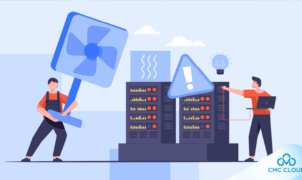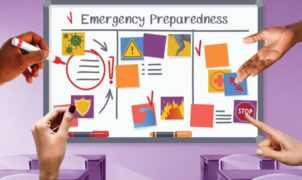
Preparing to welcome a pest-free living environment is something every household desires. With the presence of professional pest control services, achieving this goal safely and effectively is within reach. Below is a detailed guide on how professional pest control services can help protect your home.
1. Initial Assessment and Professional Consultation:
a. Thorough Inspection Procedures:
Professional pest control services commence their process with an in-depth assessment of your property. Trained technicians conduct a meticulous examination, inspecting indoor and outdoor areas to identify signs of pest infestation. This comprehensive assessment involves examining potential entry points, pest trails, nests, droppings, and any damage caused by pests. Each area, from attics to basements, is meticulously inspected to determine the extent and type of infestation.
b. Identification of Pest Species:
During the inspection, technicians identify the specific types of pests present in your property. Different pests require different treatment approaches. Identification helps in understanding their behavior, reproduction patterns, and vulnerabilities. This crucial information guides the development of an effective pest control strategy tailored to the unique pest species infesting your home.
c. Assessing Infestation Severity:
The severity of infestation is gauged to understand the level of pest infiltration. The extent to which pests have infested your property determines the necessary measures and intensity of treatment required. This assessment aids in prioritizing areas that require immediate attention and outlining the most effective treatment plan.
d. Determining Underlying Causes:
Professional pest control services aim to address the root causes that attract pests to your property. Technicians look for environmental factors or structural issues that contribute to pest infestation. Factors such as food sources, moisture, cracks, or openings in the building structure are assessed to eradicate and prevent future infestations effectively.
e. Professional Consultation and Customized Plan:
Following the assessment, technicians provide a professional consultation. They discuss their findings, detailing the pest issues identified, the severity of the infestation, and the recommended treatment options. This consultation aims to educate homeowners about the specific pests, the risks they pose, and the proposed treatment methods. Moreover, professionals offer personalized and tailored plans to address the pest problem efficiently.
f. Customer Engagement and Transparency:
Professional pest control services prioritize customer engagement throughout the assessment and consultation process. They encourage homeowners to ask questions, express concerns, and participate actively in the decision-making process regarding treatment options. This transparency fosters trust and ensures that homeowners are well-informed and comfortable with the chosen pest control strategy.
g. Documentation and Reporting:
Technicians provide comprehensive reports detailing their findings, including the types of pests identified, their locations, and the severity of the infestation. These reports serve as a reference point for ongoing treatments, future inspections, and for tracking the effectiveness of the implemented pest control measures.
The initial assessment and professional consultation phase in pest control services are pivotal in understanding the pest situation, customizing an effective treatment plan, and fostering transparent communication between technicians and homeowners. This comprehensive analysis lays the groundwork for targeted and successful pest eradication strategies tailored to the specific needs of your property.

2. Advanced Pest Eradication Methods:
a. Targeted Treatments Based on Pest Identification:
Professional pest control services employ advanced and targeted eradication methods tailored to the identified pest species. Different pests require specific treatments, and technicians use this knowledge to choose the most effective approach. For instance, baiting techniques, chemical treatments, or biological controls might be utilized based on the type of pests present.
b. Chemical Treatments and Pesticides:
In cases where necessary, professional services apply chemical treatments using industry-approved pesticides. However, these treatments are applied judiciously and in compliance with safety standards to minimize risks to humans, pets, and the environment. Technicians carefully select and apply chemicals in a manner that effectively eliminates pests while ensuring safety.
c. Biological Pest Control:
Innovative pest control methods often include biological controls such as introducing natural predators or parasites that target specific pests. This environmentally friendly approach aims to disrupt the pest population’s breeding cycle or behavior without posing risks to other organisms.
d. Heat and Fumigation Treatments:
Heat treatments and fumigation are advanced pest eradication methods effective against certain pests. Heat treatments involve raising the temperature in specific areas to exterminate pests, particularly bed bugs and termites. Fumigation employs gas to eliminate pests present in enclosed spaces, ensuring comprehensive eradication.
e. Integrated Pest Management (IPM):
Professional pest control services often utilize Integrated Pest Management (IPM) approaches. This strategic and sustainable method integrates multiple pest control techniques, emphasizing prevention, monitoring, and control measures. IPM aims to minimize reliance on chemical treatments and focuses on long-term pest prevention.
f. Trapping and Exclusion Techniques:
In addition to chemical treatments, pest control services use trapping and exclusion techniques. Traps strategically placed target specific pests, capturing them and reducing their population. Exclusion methods involve sealing or blocking entry points to prevent pests from entering the property.
g. Monitoring and Follow-Up:
Following the initial treatment, monitoring and follow-up inspections are conducted to assess the effectiveness of the eradication methods. Technicians track changes in pest activity and modify treatment plans if necessary to ensure long-term pest management.
h. Eco-Friendly and Low-Impact Solutions:
Professional pest control services prioritize eco-friendly and low-impact solutions. They consider environmental impact, opting for methods that minimize harm to non-target organisms and ecosystems while effectively eradicating pests.
i. Ongoing Education and Innovation:
Technicians in professional pest control services undergo continuous training and education to stay updated on the latest advancements in pest eradication methods. This commitment to ongoing learning ensures that they apply innovative and effective techniques to tackle evolving pest issues.
Advanced pest eradication methods employed by professional pest control services encompass a range of techniques tailored to effectively eliminate pests while prioritizing safety, environmental responsibility, and long-term pest prevention. These methods undergo constant innovation and adaptation to address diverse pest challenges in an efficient and eco-friendly manner.

3. Diverse Preventive Services:
a. Inspections and Property Assessments:
Professional pest control services conduct regular inspections and comprehensive property assessments. These examinations aim to identify potential vulnerabilities, entry points for pests, or conditions conducive to infestations. Thorough assessments help in creating a targeted prevention strategy.
b. Sealing and Exclusion:
Sealing entry points and employing exclusion techniques are fundamental preventive measures. Pest control services seal cracks, gaps, and openings that serve as entryways for pests. They also implement measures to exclude pests, such as installing screens on windows, doors, and vents.
c. Habitat Modification:
Modifying the habitat to make it less appealing to pests is a preventive approach. This includes reducing moisture levels, fixing leaks, maintaining cleanliness, and removing clutter that could serve as hiding spots or breeding grounds for pests.
d. Environmental Modifications:
Addressing environmental factors that attract pests is crucial. Pest control services advise on landscaping practices, proper waste management, and limiting outdoor factors that might attract pests to the property.
e. Integrated Pest Management (IPM) Strategies:
IPM isn’t just a reactive approach but also a preventive one. Implementing IPM strategies involves ongoing monitoring, periodic inspections, and proactive measures to prevent pests before they become a problem.
f. Education and Awareness:
Educating homeowners about pest behavior, early signs of infestation, and preventive measures is essential. Services offer guidance on practices that discourage pests, like proper food storage, waste management, and household hygiene.
g. Routine Treatments and Maintenance Plans:
Regular preventive treatments and maintenance plans are crucial in deterring pests. Scheduled treatments help create a protective barrier around the property, preventing infestations from taking root.
h. Weatherproofing and Structural Repairs:
Addressing structural issues and weatherproofing the property minimizes pest entry points. This includes repairing leaks, fixing damaged roof tiles, and ensuring proper ventilation.
i. Chemical-Free Preventive Measures:
Pest control services offer non-chemical preventive options for homeowners concerned about chemical usage. This may involve using natural repellents, traps, or adopting environmentally friendly methods.
j. Pest Monitoring and Early Detection:
Implementing monitoring systems aids in early pest detection. Services set up monitoring devices, such as traps or sensors, to identify pest presence before infestations escalate.
k. Customized Preventive Plans:
Each property requires a unique preventive plan. Pest control services customize plans based on property specifics, previous infestations, and environmental factors to create the most effective prevention strategy.
l. Education on Reducing Attractive Conditions:
Services educate homeowners on reducing conditions that attract pests. This includes advice on eliminating standing water, trimming vegetation away from the property, and proper storage of firewood.
m. Seasonal Pest Control Measures:
Different seasons bring specific pest challenges. Services offer seasonal treatments to address seasonal pests and prevent infestations during peak pest activity periods.
n. Follow-Up and Maintenance:
Post-treatment, services provide guidance on maintenance practices. This includes routine checks, implementing suggestions for continued pest prevention, and periodic re-assessments.
o. Collaboration and Customer Involvement:
Professional services encourage collaboration with homeowners. They involve homeowners in decision-making processes and encourage them to report any pest activity for prompt action.
Diverse preventive services play a crucial role in maintaining a pest-free environment. These services encompass a broad spectrum of measures tailored to the property, aiming to prevent infestations and create a proactive defense against potential pest issues. Collaboration between homeowners and pest control services is essential in implementing effective preventive strategies.

4. Safety Assurance and Warranty:
a. Safety Protocols and Regulations:
Professional pest control services prioritize safety as a fundamental aspect of their operations. They adhere strictly to safety protocols and regulations established by relevant authorities. Technicians undergo extensive training to ensure they follow safety guidelines while implementing pest control measures.
b. Use of Environmentally Friendly Products:
Services increasingly utilize environmentally friendly and low-toxicity products in their treatments. They prioritize the use of eco-friendly alternatives that pose minimal risk to humans, pets, and the environment while effectively targeting pests.
c. Proper Application Techniques:
Technicians are trained in the proper application of pest control products. They follow manufacturer guidelines meticulously, ensuring the correct quantity, placement, and application methods to maximize effectiveness while minimizing risks.
d. Safety Measures for Occupants:
Before and after treatments, services inform homeowners about safety precautions. These precautions may include temporary evacuation, covering food and utensils, and keeping pets away during treatments to prevent accidental exposure.
e. Pet and Plant Safety:
Pest control services take additional care to ensure the safety of pets and plants. They advise homeowners on protecting aquariums, removing pet bedding during treatments, and covering sensitive plants to prevent exposure to chemicals.
f. Post-Treatment Guidelines:
Following treatments, services provide clear post-treatment guidelines. These guidelines outline necessary precautions, cleaning procedures, and safety measures to ensure the continued safety of occupants and pets after the pest control application.
g. Evaluation of Health Risks:
Services conduct risk assessments, evaluating potential health risks associated with treatments. They inform homeowners about potential risks, such as allergic reactions, and provide guidance on mitigating these risks.
h. Clear Communication:
Open communication between technicians and homeowners is crucial. Services maintain clear communication channels, ensuring homeowners understand the procedures, risks, and safety measures involved in the pest control process.
i. Warranty and Guarantees:
Many professional pest control services offer warranties and guarantees for their treatments. These assurances often cover a specified period, guaranteeing free retreatment if pests persist within the agreed-upon time frame.
j. Detailed Contracts and Agreements:
Contracts between homeowners and pest control services include detailed terms and conditions. These agreements outline the scope of services, responsibilities, treatment methods, potential risks, and warranties offered.
k. Customer Support and Assistance:
Professional services provide ongoing customer support and assistance. They address any concerns or queries homeowners may have post-treatment, offering guidance and assistance when needed.
l. Transparency in Practices:
Transparency is key in ensuring safety assurance. Services maintain transparency in their practices, informing homeowners about the products used, their impact, and the potential risks associated with treatments.
m. Adherence to Industry Standards:
Professional pest control services adhere to industry standards and best practices. They stay updated with the latest advancements, ensuring their methods align with current safety standards and regulations.
n. Feedback and Improvement:
Feedback from homeowners is valued by pest control services. They use customer feedback to improve their services, ensuring continuous enhancement of safety protocols and practices.
o. Compliance with Legal Regulations:
Services comply with legal requirements and regulations concerning pest control. They possess necessary licenses, certifications, and insurance, meeting legal obligations to provide safe and reliable services.
Safety assurance and warranties play an integral role in professional pest control services. These aspects ensure the safety of occupants, pets, and the environment during and after treatments. The provision of warranties and adherence to safety measures enhance customer satisfaction and confidence in the services offered.
5. Post-Service Benefits:
a. Elimination of Pest Infestation:
One of the primary post-service benefits is the complete eradication of pests. Professional pest control services ensure that the targeted pests are effectively eliminated from the property, restoring a pest-free environment.
b. Improved Health and Hygiene:
Eliminating pests contributes significantly to improved health and hygiene standards within the home. Removing disease-carrying pests reduces health risks, promoting a healthier living environment for occupants.
c. Reduced Property Damage:
Pests can cause significant damage to property structures, furniture, and belongings. Post-service benefits include preventing further damage caused by pests, protecting property investments, and preserving structural integrity.
d. Peace of Mind:
Living in a pest-free environment provides occupants with peace of mind. They can enjoy a comfortable and stress-free living space without the worry of pest-related issues affecting their daily lives.
e. Long-Term Prevention:
Professional services don’t just eliminate existing pests; they also implement preventive measures. Post-service benefits include ongoing prevention methods that deter future infestations, ensuring long-term pest control.
f. Cost-Efficiency:
Addressing a pest problem promptly with professional services can be more cost-effective in the long run. Post-service benefits include avoiding potential property damage and additional expenses associated with extensive pest infestations.
g. Improved Air Quality:
Pest droppings and debris can compromise indoor air quality. Removing pests leads to improved air quality within the home, creating a healthier environment for occupants, especially those with respiratory issues.
h. Enhanced Sleep Quality:
Pest-free environments contribute to better sleep quality. Eliminating pests such as bed bugs or rodents can alleviate concerns about bites or disturbances, promoting a better night’s sleep.
i. Preservation of Belongings:
Pests can damage personal belongings like clothing, documents, and furniture. Post-service benefits include preserving belongings and preventing further damage caused by pest infestations.
j. Enhanced Property Value:
Maintaining a pest-free property contributes to its value. Post-service benefits extend to preserving property value and improving its marketability by ensuring it’s free from pest-related issues.
k. Sustainable Lifestyle:
Creating a pest-free environment aligns with a sustainable lifestyle. Post-service benefits include fostering an eco-friendly environment by reducing the use of harmful chemicals and implementing eco-conscious pest control practices.
l. Continued Support and Maintenance:
Professional pest control services often provide ongoing support. This includes periodic inspections, maintenance recommendations, and assistance in case of any pest-related concerns post-treatment.
m. Improved Mental Well-being:
Living in a pest-free environment positively impacts mental well-being. Occupants experience reduced stress and anxiety related to pest issues, contributing to overall mental health.
n. Education on Pest Prevention:
Post-service benefits include educating homeowners on practices that prevent future pest problems. Services offer guidance on maintaining a pest-free environment through proper sanitation and preventive measures.
o. Customer Satisfaction:
Effective pest control services result in increased customer satisfaction. Post-service benefits ensure that homeowners are satisfied with the results and the quality of service received.
Post-service benefits encompass a wide array of advantages that extend beyond the eradication of pests. These benefits include improved health, property preservation, cost efficiency, and peace of mind. Professional pest control services offer a holistic approach that prioritizes long-term prevention and customer satisfaction.

Conclusion:
Professional pest control services not only eliminate pests but also safeguard your home from health and security risks associated with them. They provide comprehensive and long-term solutions, helping you maintain a safe and comfortable living environment.







 Welcome to LawyerNote, your premier destination for expert legal counsel tailored to your unique needs. At LawyerNote, we specialize in navigating the complexities of the legal system, offering comprehensive solutions to our valued clients. With a team of seasoned attorneys covering diverse fields including corporate law, family law, and criminal defense, we’re equipped to handle a wide spectrum of legal matters. Our unwavering commitment to excellence, integrity, and client satisfaction sets LawyerNote apart. Whether you’re grappling with a complex litigation case or seeking guidance on business transactions, LawyerNote is your trusted legal partner every step of the way.
Welcome to LawyerNote, your premier destination for expert legal counsel tailored to your unique needs. At LawyerNote, we specialize in navigating the complexities of the legal system, offering comprehensive solutions to our valued clients. With a team of seasoned attorneys covering diverse fields including corporate law, family law, and criminal defense, we’re equipped to handle a wide spectrum of legal matters. Our unwavering commitment to excellence, integrity, and client satisfaction sets LawyerNote apart. Whether you’re grappling with a complex litigation case or seeking guidance on business transactions, LawyerNote is your trusted legal partner every step of the way.




